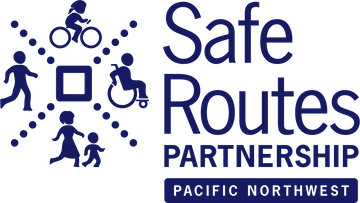The greater Portland area’s regional planning body, Metro, is in the process of updating the region’s Regional Transportation Plan (RTP), which is a blueprint to guide investments for all forms of travel – motor vehicle, transit, bicycle and walking – and the movement of goods and freight throughout the Portland metropolitan region. The plan identifies current and future transportation needs and projects, how much funding is needed to meet those needs, and what funds the region expects to have available over the next 25 years (from local, state, and federal sources) to make those investments a reality. Federal regulators require updates to the RTP every 4-5 years. The RTP is made of two main parts: a policy section that guides the vision, goals, and targets for the transportation system, and the resulting project lists.
Regional Leadership Forum focuses on equity and community
Earlier this year, elected leaders and community members from around the greater Portland region came together to discuss the region’s priorities for the transportation system. This fourth and final Regional Leadership Forum highlighted voices from community leaders on transportation priorities, with a specific focus on the needs and impacts of and to community members whose voices are not frequently heard in the “transportation system” discussions of elected leaders – those who are often most concerned about crossing the nearby arterial street safely, to get their kids to school or themselves to their transit stop, or the local air quality impacting their health as a result of diesel truck emissions.
From this Forum conversation emerged seven key takeaways to help refine the RTP project lists to better meet regional goals in the next 25 years – ensuring people in our communities can get around to where they need to go, and that we’re also prioritizing safety for people on foot, affordability, and the prevention of involuntary housing displacement from transportation investments.
Seven Key Takeaways
- We can make more near-term progress on key regional priorities – equity, safety, travel options, and congestion.
- This is an opportunity to reduce disparities and barriers that exist for historically marginalized communities.
- Prioritize projects that focus on safety in high-injury corridors.
- Accelerate transit service expansion.
- Tackle congestion and manage travel demand.
- Prioritize completion of biking and walking network gaps.
- We must continue to build public trust through inclusive engagement, transparency, and accountability.
Following this Forum, the Safe Routes Partnership, along with seven other signatories from the Getting There Together Coalition, sent a letter to Metro Council and Metro’s Joint Policy Advisory Committee on Transportation (JPACT) urging significant changes to the RTP Project List and outlining our concerns:
“[A]s highlighted by Metro’s own project list analysis, the current list and investment strategy show that as a region we are not, in fact, planning to build a transportation system that will help us meet our goals by 2035 - most troubling, our equity, safety, climate, and congestion goals will not be met.”
Our suggestions:
- Expand transit operations to meet service levels adopted in the Climate Smart Strategy.
- We also support funding enhanced transit - additional service stuck in congestion will not meet our goals.
- Target investments to address safety as well as congestion on the region’s arterial and throughways that extends beyond the peak travel periods.
- All projects on the High Crash Network should be reviewed to ensure they meet our Vision Zero goals.
- Across the region, we should add RTP projects on orphaned state highways, e.g. 82nd Avenue.
- All projects on the High Injury Network should be reviewed and enhanced to meet safety objectives. Project summaries should demonstrate clearly how much of the project is dedicated to safety improvements.
- Complete 100% of the gaps in the regional active transportation network.
- We strongly support the focus of this work being on the high injury corridors that are in historically marginalized communities, and these project being included in years 1-10.
- Lead with equity.
- Jurisdictions should reference the two equity maps produced by the RTP Equity Work Group, expanding the definition of ‘historically marginalized communities’ for analysis:
- 1) inclusion of seniors and children under the age of 18, and
- 2) a map of communities of color, non-English speakers/linguistically isolated communities, and low-income.
- Metro should provide more specific data that documents how much more likely people living in historically marginalized communities are to be killed or seriously injured based on housing affordability and past transportation underinvestment.
Read our full letter to Metro Council and JPACT. Following this and other advocacy from community leaders to strengthen the RTP Project List so that it aligns with regional goals, Metro Council sent direction to local agencies to re-submit their RTP project lists, guided by the Seven Key Takeaways from the Leadership Forum.
Updated project list results
We are pleased to report that the vast majority of local agencies made significant changes to their re-submitted RTP Project Lists, notably identifying more safety projects and moving more pedestrian and bicycling projects up to be built in the next 10 years (rather than the 11-20 year timeframe). This will result in near-term increased revenue toward transit, walking, and bicycling projects, including approximately 60% of projects providing specific safety benefits. These shifts will help our region achieve its equity, safety, and climate goals, benefitting community members who need it the most with more travel choices.
The RTP Project List map can be found here. Public Comment on the draft RTP Update will run from June 29 through August 13.


